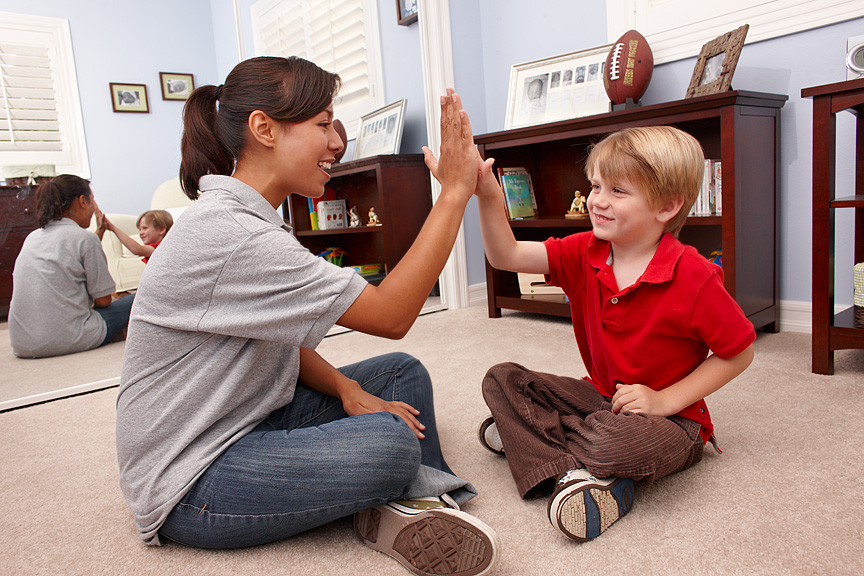In my last post I described Autism Spectrum Disorder (ASD) and the importance of early identification. If you haven’t seen it, check it out here. Early identification is important because it is much easier to overcome the difficulties associated with ASD at a young age while the brain is still developing. Not to say that an older adolescent or adult wouldn’t benefit from ABA – everyone can benefit and does benefit from ABA!
What is Applied Behavior Analysis (ABA)?
Applied Behavior Analysis (ABA) is a scientific approach for researching the relationship between behaviors and the environment; then designing methods to change behavior (based on this research); and applying the methods to improve behaviors that are important in people’s lives. It is important to note: the term ‘behavior’ in ABA is used to identify any observable, measurable movement – ‘behavior’ is a neutral term that does not imply ‘good’ or ‘bad’ in any description. In ABA, the focus is on increasing desirable behaviors and decreasing problem behaviors.
The first part (researching) is largely what I do in my job. I observe and take data, and observe some more in a different environment and take data, and if I’m still not sure, I observe more and take more data. You see, there is not an ABA ‘magical bag of tricks.’ I am not able to tell you how to get your child to stop hitting you unless I am able to see the child and the hitting and everything else that is happening in that child’s environment. Similarly, I can’t tell you how to ‘make’ your child independently clean up their toys without seeing everything else that is occurring during those situations. Only after I observe behavior in multiple settings and in multiple situations am I able to determine behavior-change strategies that may help.
The ABCs of ABA….
When I observe a child I am trying to understand how the behavior is related to the environment. I look for the ABCs of ABA:
Antecedent: Situation occurring before a behavior occurs
Behavior: Specific action in question
Consequence: Situation occurring after the behavior occurs
When I can see what happens before and after a behavior occurs, I can determine the function (why) a behavior occurs. Once the function of the behavior is determined, then a plan for that behavior reduction or behavior increase can be developed. If the goal is for the behavior to increase, then a plan is put in place to change antecedent and consequence events to increase the behavior. If the goal is for the behavior to decrease, then a plan is put in place to change antecedent and consequence events to decrease the behavior.
Antecedent Interventions
Antecedent Interventions are put in place to prevent a behavior from occurring (in the case of behavior reduction) or to encourage a behavior to occur (behavior increase). For example, if I frequently leave my house without the mail key and I would like to increase the behavior of taking my mail key with me – I might leave the key on top of my cell phone (which I do not leave the house without) as a reminder to take the mail key with me when I leave.
In the case of behavior reduction: If my child comes into the house with dirty shoes and tracks dirt in often; I might meet him at the door and tell him to take off his shoes – preventing the tracking of dirt through the house. These examples are simple, but illustrate simple adjustments can prevent unwanted behavior from occurring or encourage behavior that needs to occur more often.
Consequence Interventions
Once a behavior has occurred, you are left with consequence interventions. If you would like the behavior to occur in the future, you want to give reinforcement as the consequence. For example, I come home and my spouse has made a wonderful dinner – I would give lavish praise and offer to do clean up. My spouse enjoys praise, and really enjoys not having to clean up, which would lead to an increase in dinner making behavior.
If the behavior is not something you would like to occur in the future, then the consequence needs to be absent of reinforcement. This part can be more difficult to figure out, as the consequence for problem behavior is most likely what is maintaining the occurrence of that behavior. For example, a parent may tell me that they want their child to stop whining in public. After several observations, I notice that when the child whines, the parent responds by picking up the child and saying, ‘shhhh’ and when that occurs the child stops whining. Picking up was rarely observed to occur when the child was not whining. A plan was created: child was taught to say, ‘up’ and hold hands up to be picked up – and parent would reinforce that behavior by picking the child up. Child was not picked up when whining occurred, parent would not respond until whining stopped and the parent was able to prompt the child to say, ‘up’ and then reinforce the desired behavior.
The examples in this post were very simple, but provide a beginning look into the world of ABA.
To learn more about our ABA training and treatment programs, visit our website at: http://www.behaviorfrontiers.com.
To inquire about services for your child, please call our intake team at: 888-922-2843.





